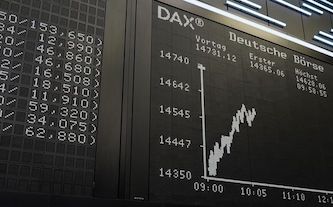Total assets under management (AUM) at the world’s 500 largest asset managers rose 12.5% to $128 trillion at the end of 2023, according to new research from the Thinking Ahead Institute.
The research also revealed the continued evolution of active versus passive assets under management among the largest investment managers.
For the first time, passive investment strategies now account for more than one third of assets among the 500 largest firms (33.7%) — although this still leaves almost two thirds of assets managed by the world’s largest managers in active strategies.
Asset class allocations have also evolved, with renewed growth of private markets.
Core equity and fixed income remain the dominant asset classes, comprising 77.3% of total AUM — 48.3% equity and 29 % fixed income.
North America experienced the largest growth in AUM with a 15% increase, followed closely by Europe — including the UK — with a 12.4% rise. Japan saw a slight decline, with AUM decreasing by 0.7%. As a result, North America now accounts for 60.8% of the total AUM in the top 500 managers, with $77.8 trillion at the end of 2023.
At the very top of the rankings, US managers make up 14 of the top 20, and account for 80.3% of the assets of the top 20.
The research shows that BlackRock remains the world’s largest asset manager, with its assets now above $10 trillion once more. Vanguard Group holds a strong second place at almost $8.6 trillion AUM and both remain significantly ahead of Fidelity Investments and State Street Global – ranked third and fourth respectively.
The biggest asset managers in Europe and the UK include UBS, Allianz, Amundi, Legal & General, BNP Paribas, Natixis Investment Managers, AXA, Deutsche Bank, Aegon, Schroders, Abrdn and Baillie Gifford.
Jessica Gao, director at the Thinking Ahead Institute, comments: “Asset managers have experienced a year of consolidation and change. While there has been a return to strong market performance, the last year has also seen forces of change.
“Macro factors have played a key part in the story, with notable highs in interest rates during 2023 exerting varied pressure on different asset classes, geographies and investment styles.
“As this now gradually switches to a rate cutting environment, equity markets are beginning to return positive performance also driven by improving expectations of earnings growth. Uncertainties looking ahead are now focused on geopolitical events and several major elections.
“We have continued to see net flows into passive strategies as they continue to offer a compelling value proposition, particularly in terms of lower fees and simplicity. Yet growing market volatility and issues with concentration, which typically highlights the need for expertise to outperform benchmarks, may be a source of caution from some allocators to passive market trackers.
“Meanwhile, asset managers continue to face major pressure to evolve their own business models. Investment in technology remains essential not just to maintain a market edge, but also to meet evolving client requirements and expectation in reporting and customer service.
“Increased competition, fee compression, and the growing demand for more personalised, technology-driven investment solutions are challenging traditional structures. We have witnessed notable successes of independent asset managers versus many of the more affiliated insurer-linked vs bank-linked asset managers.”
